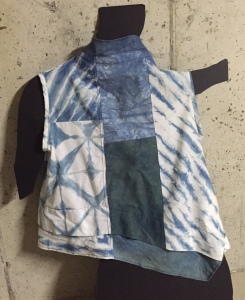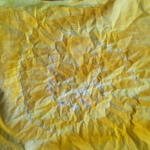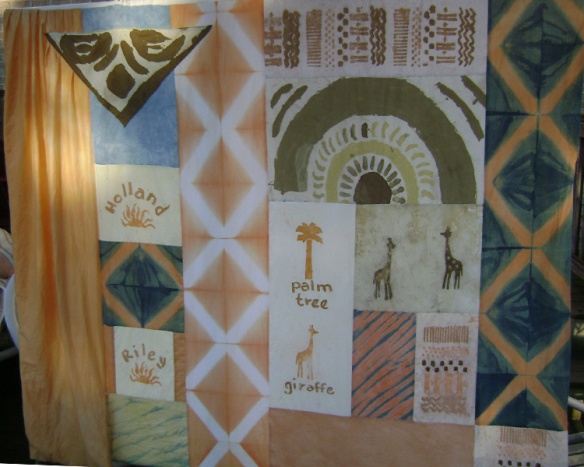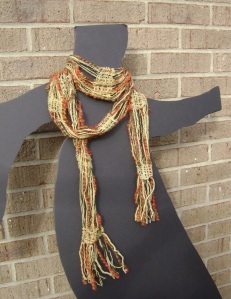Combining colors should be an easy process. Yellow and blue make green, or they should. But, it’s a challenge to get greens with natural dyes. Should be easy…nature has greens all round! Here’s a shirt that I upcycled and dyed with clover, crown vetch and indigo.



I experimented with crown vetch first. I dyed a piece of cotton muslin with flowers and then overdipped it with indigo. I was very pleased with the yellow and more pleased with the greens. So, on to the shirt. I’m pleased with the shirt, but the yellow isn’t as pale and the green isn’t as “kelly.” My first dye of the shirt was more gold. Was it the amount of fabric? Or the fabric was linen? Or it had been printed already–although most was still offwhite. So, I collected some clover flowers and the yellow was more what I had in mind. (I started to type, the yellow was more yellow 🙂 )
I had switched to crown vetch because the flowers are bigger, so less to harvest!! But, I went back to clover. Yup, that little white flower.
 Another green experiment. I had been saving some pomegranate rinds…keeping them in the fridge like gold:) I had used them this winter and the color was a pleasing gold. I was cleaning my fridge… so, I pulled them out and dyed a piece of muslin. The color from the pomegranate was more gold. When I over-dyed that with the indigo…not a green. More of a brown. Actually nice!
Another green experiment. I had been saving some pomegranate rinds…keeping them in the fridge like gold:) I had used them this winter and the color was a pleasing gold. I was cleaning my fridge… so, I pulled them out and dyed a piece of muslin. The color from the pomegranate was more gold. When I over-dyed that with the indigo…not a green. More of a brown. Actually nice!
 Here’s the collection, pre-piecing, complete with pre-pressing wrinkles
Here’s the collection, pre-piecing, complete with pre-pressing wrinkles






















